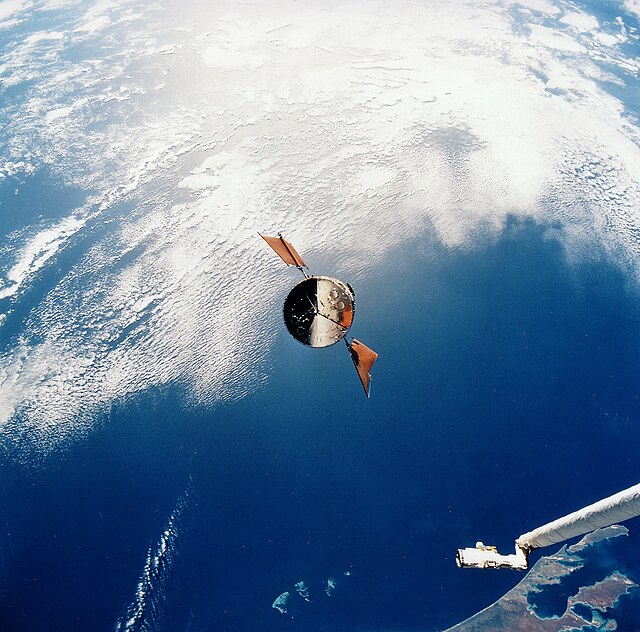STS-61 was NASA's first Hubble Space Telescope servicing mission, and the fifth flight of the Space Shuttle Endeavour. The mission launched on December 2, 1993, from Kennedy Space Center (KSC) in Florida. The mission restored the spaceborne observatory's vision with the installation of a new main camera and a corrective optics package (COSTAR). This correction occurred more than three and a half years after the Hubble was launched aboard STS-31 in April 1990. The flight also brought instrument upgrades and new solar arrays to the telescope. With its very heavy workload, the STS-61 mission was one of the most complex in the Shuttle's history.
Musgrave being raised to the top of Hubble by Canadarm, as it sits in Endeavour's payload bay.
Standing: Covey, Hoffman, Akers Seated: Bowersox, Thornton, Musgrave, NicollierSpace Shuttle program← STS-58 (58)STS-60 (60) →
Launch of the first servicing mission
Approaching the telescope.
The Hubble Space Telescope is a space telescope that was launched into low Earth orbit in 1990 and remains in operation. It was not the first space telescope, but it is one of the largest and most versatile, renowned as a vital research tool and as a public relations boon for astronomy. The Hubble telescope is named after astronomer Edwin Hubble and is one of NASA's Great Observatories. The Space Telescope Science Institute (STScI) selects Hubble's targets and processes the resulting data, while the Goddard Space Flight Center (GSFC) controls the spacecraft.
Seen in orbit from the departing Space Shuttle Atlantis in 2009, flying Servicing Mission 4 (STS-125), the fifth and final Hubble mission.
Astronaut Owen Garriott working next to Skylab's crewed solar space observatory, 1973
Lyman Spitzer played a major role in the birth of the Hubble Space Telescope project.
Nancy Grace Roman with a model of the Large Space Telescope that was eventually developed as the Hubble Space Telescope. While listed as a 1966 photo, this design was not the standard until the mid-1970s.








